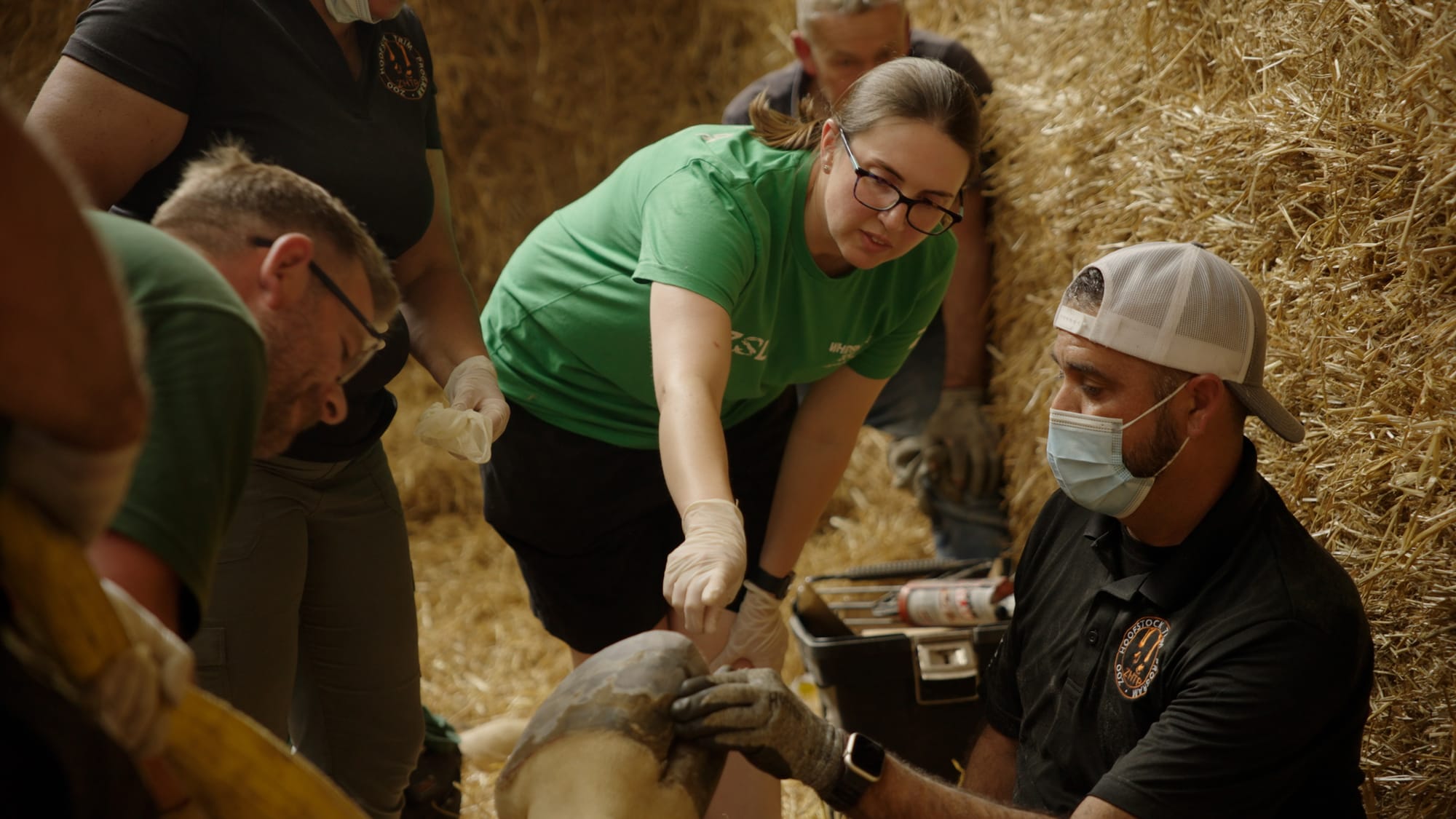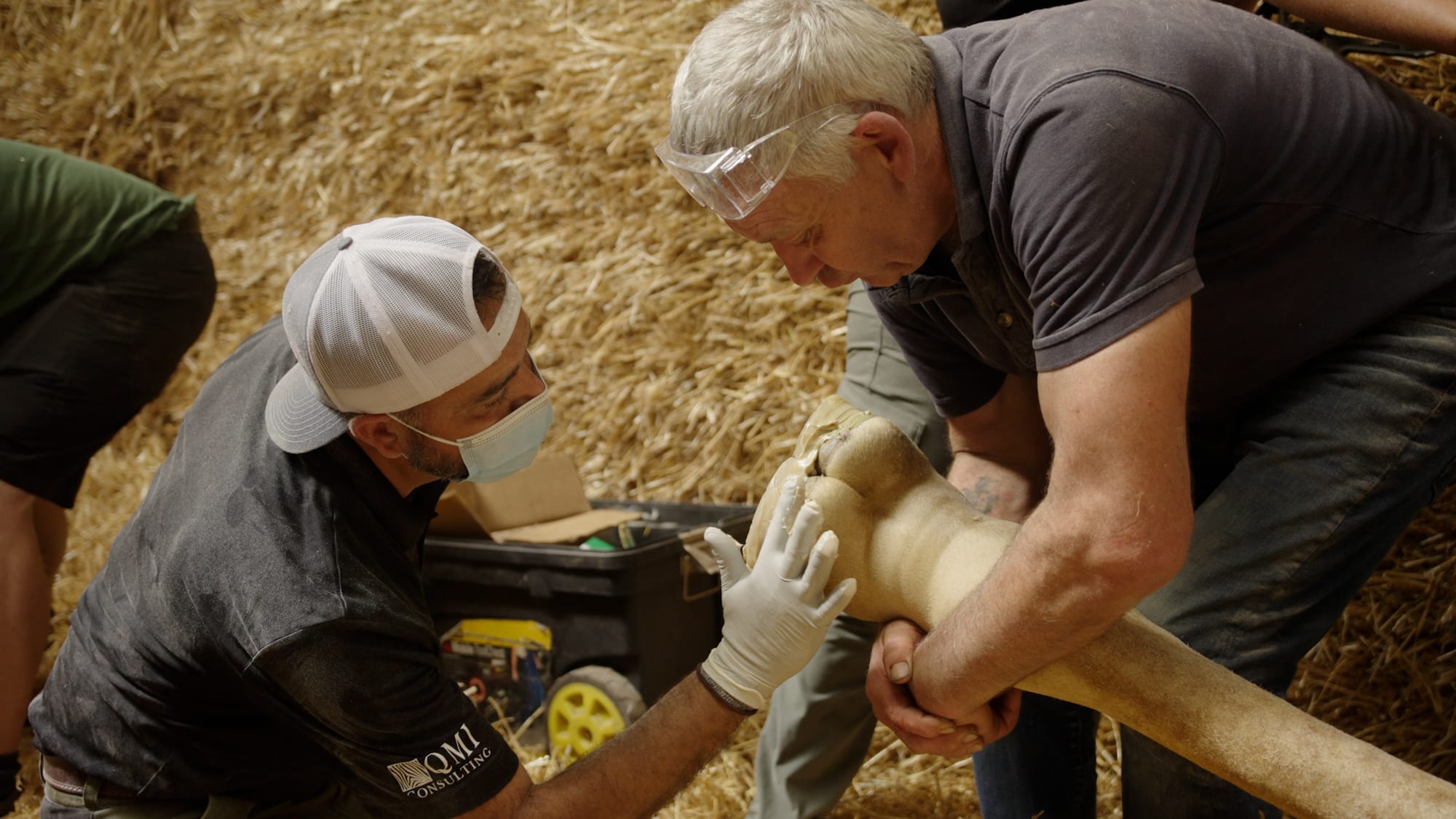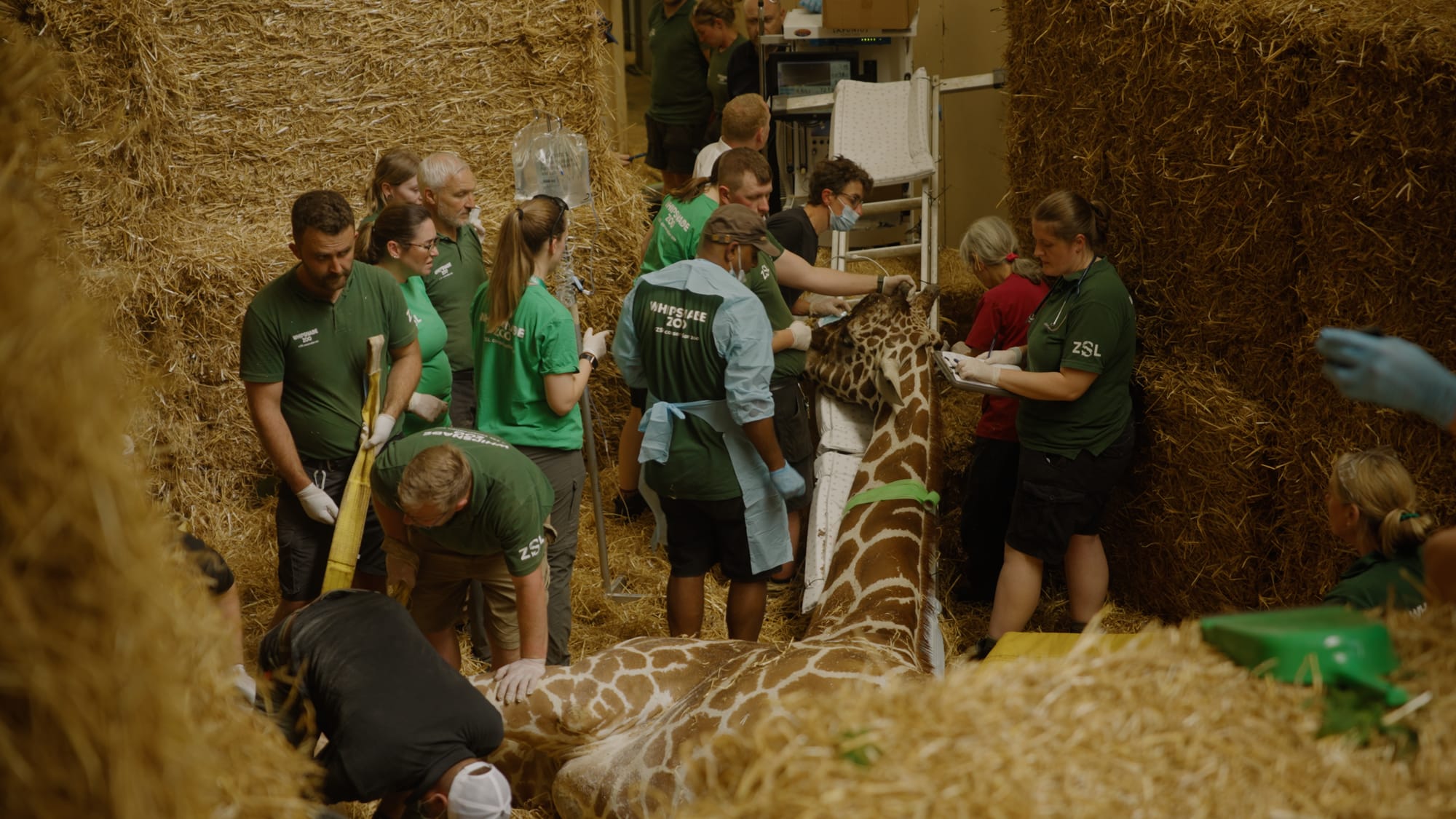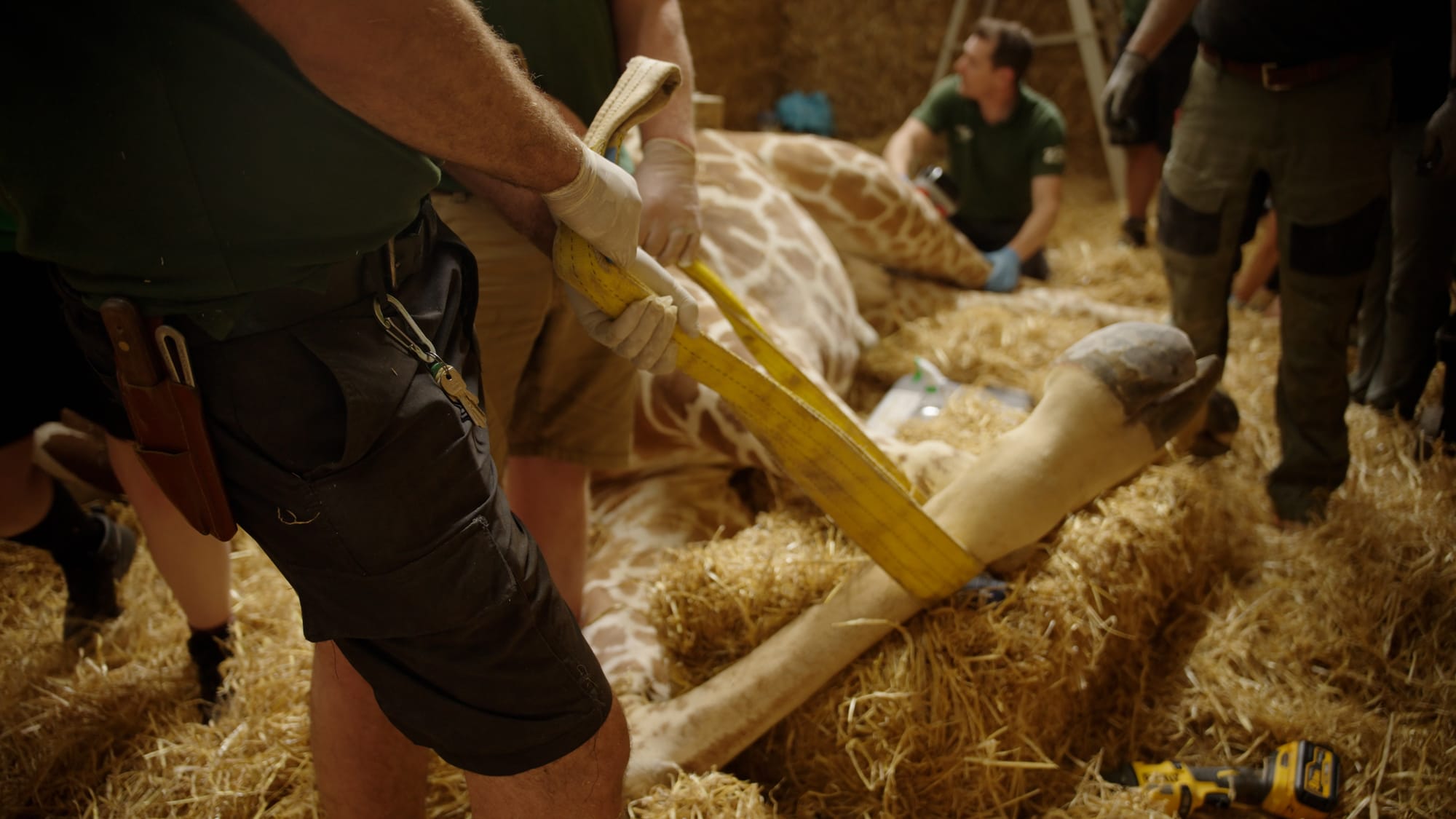Specialist Vets Travel More than 4,000 Miles to Treat Giraffe at Bedfordshire Zoo

By Jill Dando News
It took eight zookeepers, six vets, five vet nurses, four farriers, and two veterinary anaesthesiologists, to perform a life-changing veterinary procedure on Bashu, a 4.8 metre (16 feet) tall, reticulated giraffe at Whipsnade Zoo in Bedfordshire.
The iconic animal, patriarch of the conservation zoo’s herd and father to youngsters Myra and Timba, was being treated for recurrent lameness, which the Zoo’s vets had identified was caused by overgrown hooves.

Although he was receiving regular veterinary care - including laser treatment - foot care, and pain medication to help manage the condition, Bashu’s condition was worsening over time.
To prevent him from losing his ability to walk, expert farriers - hoof specialists - were called in to perform a ‘radical hoof trim’.
While a hoof trim may sound akin to a pedicure, when it comes to a giraffe, the list of challenges this procedure poses is as long as their famous necks.
In order to conduct the procedure, Bashu had to be placed under a general anaesthetic – no small feat for an animal with the highest blood pressure in the animal kingdom, and a body designed to carefully manage blood flow to the ends of its long limbs and all the way up its neck to the brain.
However, vets and specialists needed access to Bashu’s hooves for a longer period than possible during his voluntary footcare sessions, where he is in charge, and can decide to withdraw his hoof at any time or not participate at all, making a general anaesthetic necessary to complete the procedure.

Behind-the-scenes footage captured during the 90-minute long procedure shows specialist farrier Steve Foxworth and his team from the Zoo Hoofstock Trim Programme (ZHTP) in the US, trimming Bashu’s hooves and fitting the front two with custom-made ‘shoes’, similar in look to horseshoes, which were made from urethane rubber and carefully attached with acrylic glue.
With his head propped up against a ladder to help maintain his blood pressure, Bashu was continually monitored by veterinary anaesthetists, while a special large-animal ventilator from Burtons Medical Equipment was used to help Bashu breathe throughout the procedure.

ZSL’s veterinary manager Hannah Rowland said:
“This was a hugely complex procedure, with a lot of moving parts involved, and it’s thanks to the collaboration of all the people there that we were able to do what was needed, swiftly and successfully.”
Bashu’s height and size meant he couldn't be transported to the veterinary hospital, so his keepers turned his habitat into an operating room, lining the walls with 46 hay bales of various sizes as a precaution against any injuries.
During the procedure, keepers assisted with manoeuvring Bashu’s legs so his hooves were accessible, and even massaged them to keep blood circulating in the 1.1 ton animal.

Hannah continued: “Bashu was up on his feet again within 15 minutes of us finishing the procedure, and he has been making good progress so far.
“Whilst it isn’t a miracle cure, this procedure has given Bashu the best chance at long term improvement. We will continue to monitor how he is getting on, and will resume his regular footcare sessions to keep his hooves in tip top condition.”
Information gained from the procedure will be added to a global database shared by vets, animal carers and conservationists across the globe – and will be used to inform conservation efforts for this endangered species, with the wild population declining due to habitat loss, illegal hunting, and conflict in unstable parts of Africa.
Every visit to Whipsnade Zoo helps to support the global conservation efforts of ZSL – the charity behind Whipsnade Zoo – including its world class animal care and exemplary veterinary work.
Find out more at www.whipsnadezoo.org
If you have a positive story or uplifting news to share, we’d love to hear from you!
Just email us at news@goodnewspost.co.uk.
Whether it's a local hero, an act of kindness, or a personal win, your story could help spread joy and improve someone’s mental health. Let’s make the world a little brighter, one good news story at a time.
And don’t forget—you can sign up for free to get the latest feel-good stories straight to your inbox!





